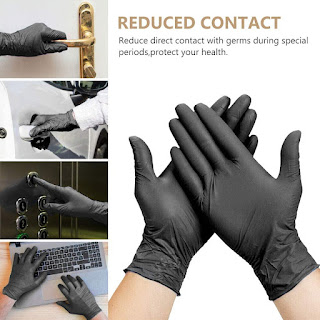Developments in medical imaging techniques helped to achieve a two-dimensional
imaging-assisted disease diagnosis has emerged as a common and recommended technique. In this method, an image modality is considered to record and examine the internal organ. Developments in medical imaging techniques helped to achieve a two-dimensional (2D) or the three-dimensional (3D) picture of the organ in greyscale or RGB form. These images would help the physician to get an insight regarding the disease in the body and also helps to track the progression of the disease with respect to time Vinyl Gloves.
Identification of the disease in its premature phase is very essential to plan for the appropriate treatment. Treatment of the premature phase disease is easy compare to other stages and hence a number of scheduled screening procedures could be planned and conducted at an early stage. The scheduled body screening will help to identify number of diseases in its premature phase, even though the symptoms are absent. As discussed earlier, the disease in humans can be commonly classified as (i) communicable and (ii) non-communicable diseases. Each disease will have its own symptom; and the patient will immediately approach the physician when he/she experiences a disease symptom.
The doctor will examine the patient with the prescribed protocol existing to identify the disease based on the symptom as well as the difficulty experienced by the patient. The doctor will suggest a range of preliminary diagnostic procedures to confirm the disease and assess the severity level TPE gloves.
The procedures executed to test the patient for confirmation of the disease is technically known as Disease-Screening (DS) process and it varies according to the disease to be detected. The procedures commonly employed in DS involves (i) personal check by an expert, (ii) clinical test ranging from sample collection and testing of the bio-signal/bio-image-based methods, (iii) intermediate level detection based on the bio-signals and images collected from the patients, and (iv) verification of report by the doctor for authentication of disease YICHANG Gloves.The overview of the clinical level diagnosis of the disease in human is presented in this section with appropriate block diagrams. Figure 1.1 illustrates the initial-level verification and recommendation by the doctor a patient approaches. This protocol includes common demographic parameters such as gender, age and weight, followed by previous history of disease, the number of days the patient has been afflicted by the symptoms, heart rate, temperature, and other recommended parameters to identify the cause and nature of the disease.
If the disease is in any internal organ then along with personal verification, the doctor will also suggest a clinical checkup to collect more information about the disease. The doctor can then plan for appropriate treatment to control the disease。











Comments
Post a Comment